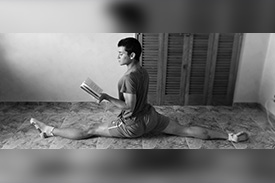 With the daily increase in social media users, particularly Instagram, there is no wonder that the platforms are rife with questionable dance content. More specifically, overstretching can regularly be viewed online by anyone with a device, including aspiring and impressionable young dancers.
With the daily increase in social media users, particularly Instagram, there is no wonder that the platforms are rife with questionable dance content. More specifically, overstretching can regularly be viewed online by anyone with a device, including aspiring and impressionable young dancers.
Seeing dancers overstretching and pushing their bodies beyond their limits is a familiar sight on Instagram especially. Extreme flexibility has become the norm, not just amongst amateur dancers but professionals too, not doing much to help the case in discouraging dancers. Instead, they could use their social media channels to promote safe dance practice, to look after and nurture the body rather than force it to extremes.
In addition, it is not mandatory to be unnaturally flexible in order to become a professional dancer. There is no doubt that dancers all over the world are getting stronger, faster and more coordinated, but perhaps that is as far as it goes. There is much more knowledge in the dance sphere that supports the nurturing of the younger dance body particularly, similar to the ‘strong not skinny’ stance within the fitness industry. Despite this, competitions – both formal and amongst peers – continue to dictate that to succeed means to perform extremely, with the legs getting higher and higher.
Ultimately, overstretching can be risky. Dancers should avoid static stretching (holding it for longer than 30 seconds) in extreme positions. Loosening the ligaments that protect the hips and knees (which do not spring back into shape once overstretched) means dancers are pressing the femur bone at such a damaging angle, it can cause a tear in the hip cartilage. Beyond that, static stretching can also cause joint destabilisation in hypermobile dancers. It can have a negative effect on muscle contraction, decreasing the ability to get into the air during jumps: some dancers still do not understand that correlation.
